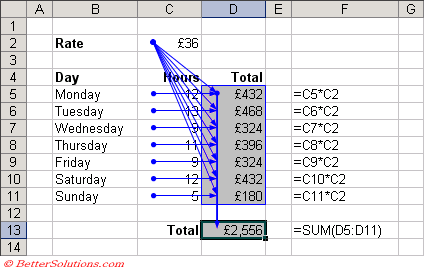

- Excel 2013 for mac trace precedents yields hashed arrow for another sheet update#
- Excel 2013 for mac trace precedents yields hashed arrow for another sheet series#
Otherwise, your formula simply becomes a series of numbers or strings, and no longer functions as a formula. NB! length limitations apply.įinally, be sure to hit Esc once you've viewed the evaluated components of your formula so the formula returns to what it was to start with. Very helpful when finding a single dud value in an array formula, etc, or displaying the values in a range.

This is most useful when a longish formula returns an error and you want to find which part is causing the problem. NB! The part you select/highlight in the formula bar must be a 'complete' phrase, as it were, that is capable of evaluation, eg complete sets of parentheses, all arguments in a formula, etc. You can use F9 to evaluate any part of a formula to see what Excel will return - if it can - and you can do it several times in a longer formula to check one part after another. Press ENTER to accept the evaluated formula. The value shown in the cell is still 30, but it no longer derives from A1 and A2, because the values in those cells have been resolved in your formula. Still in the formula bar, now do the same for A2, and you'll see =10+20

Hey presto, the highlighted part of the formula is evaluated: =10+A2. In the formula bar, inside the formlula select the cell reference, eg A1, that you want to see the value of. Here's a trick that answers the first of your questions: ' Create an array by splitting the formula on the + sign If Sheet1.Range("$C$" & r1).Value "" Then Formula value to find its formula, and go from there: Private Sub ReplaceFormulaWithValues() If you want to replace the contents of a C cell with the values in the formula, you can use the. ' In the example, C2 = A1 + B1, so offset C by one ' If A & B aren't blank, make the formula of cell C equal to A + B.
Excel 2013 for mac trace precedents yields hashed arrow for another sheet update#
You can use VBA (from Tools > Macros > Visual Basic Editor), however, to write code that will update the contents of the C cells with the the values of A + B, like this: Private Sub HideFormula() That's not how Excel works if you have a formula in a cell, that is what is going to show up in the formula bar.


 0 kommentar(er)
0 kommentar(er)
